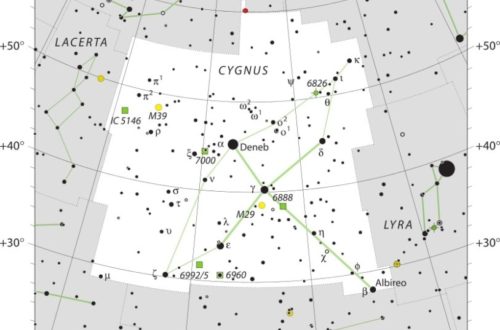Stargazing Calendar for August 2025
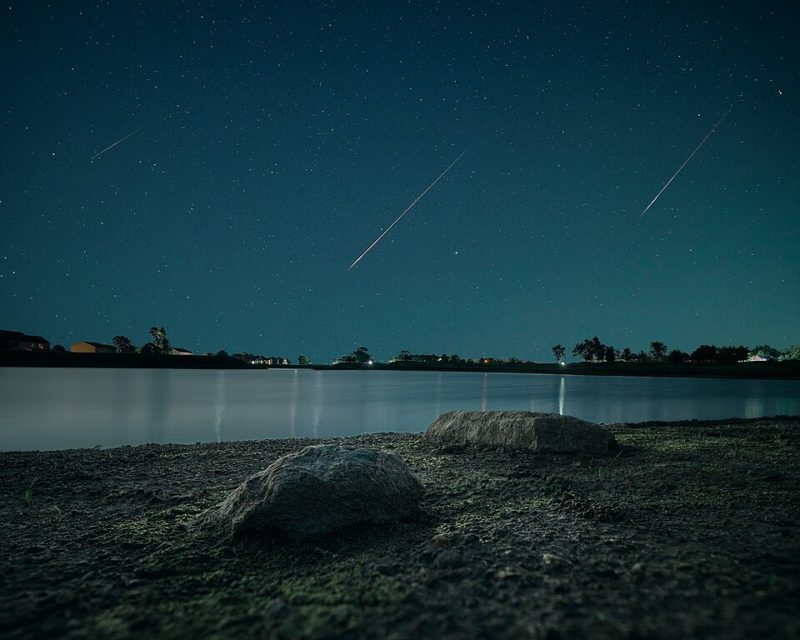
August 2025 promises an exciting array of stargazing events that will captivate astronomy enthusiasts. From planetary conjunctions to asteroid oppositions and dazzling meteor showers, there’s plenty to discover in the night sky this month.
Would you like to be notified of stargazing events?
List of Meteor Showers in August 2025
- Antihelion Source: Start on December 10; multiple peaks; end September 10.
- Piscis Austrinids: Start on July 15; peak on July 28; end on August 10.
- Southern δ-Aquariids: Start on July 12; peak on July 30; end on August 23.
- α-Capricornids: Start on July 3; peak on July 30; end on August 15.
- η-Eridanids: Start on July 31; peak on August 8; end on August 19.
- Perseids: Start on July 17; peak on August 12; end on August 24.
- κ-Cygnids: Start on August 3; peak on August 17; end on August 25.
- Aurigids: Start on August 28; peak on August 31; end on September 5.
We also have a complete list of meteor showers for the entire year of 2025 here.
List of Planetary Conjunctions in August 2025
- Conjunction of Saturn and Neptune in Pisces on August 6.
- Conjunction of Venus and Jupiter in Gemini on August 12.
- Close approach of the Moon, Saturn and Neptune in Pisces on August 12.
- Conjunction of the Moon and Saturn in Pisces on August 12.
- Close approach of the Moon and the Pleiades in Taurus on August 16.
- Conjunction of the Moon and Jupiter in Gemini on August 19.
- Conjunction of the Moon and Venus in Gemini on August 20.
- Conjunction of the Moon and Mercury in Cancer on August 21.
- Conjunction of the Moon and Mars in Virgo on August 26.
August 3: Asteroid 63 Ausonia at opposition
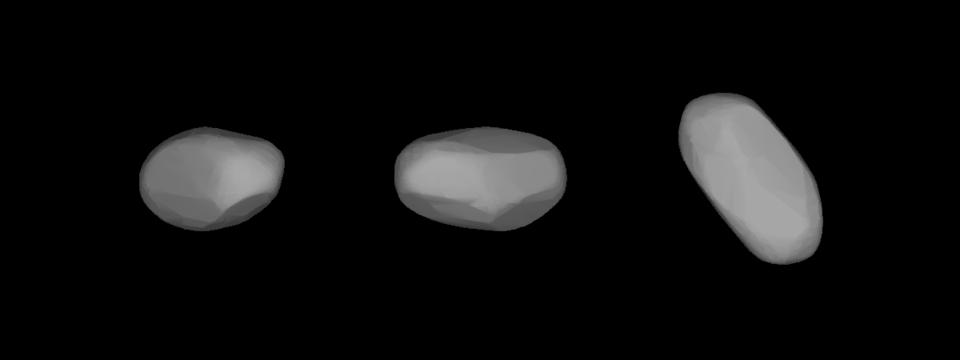
At about midnight local time, the asteroid 63 Ausonia will reach the highest point in the sky and be opposite of the Sun. Look in the constellation of Capricornus with binoculars or a telescope, as it will have an apparent magnitude of 9.3. At around the same time Ausonia will also reach its closest point to the Earth (perigee) at a distance of 1.124 AU. The Moon will be 10 days old waxing gibbous at 68%.
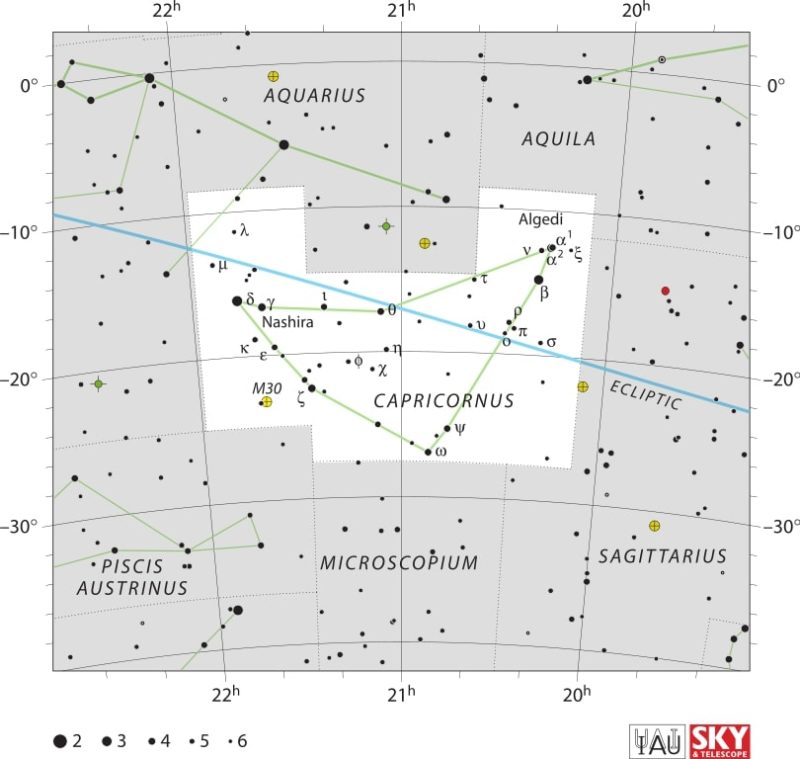
August 6: Conjunction of Saturn and Neptune
Saturn and Neptune will reach conjunction passing within 1°08′ of each other while sharing the same right ascension.
Saturn will be at apparent magnitude 0.6 and Neptune at magnitude 7.8 both in the constellation of Pisces. The Moon will be 13 days old waxing gibbous at 93%.
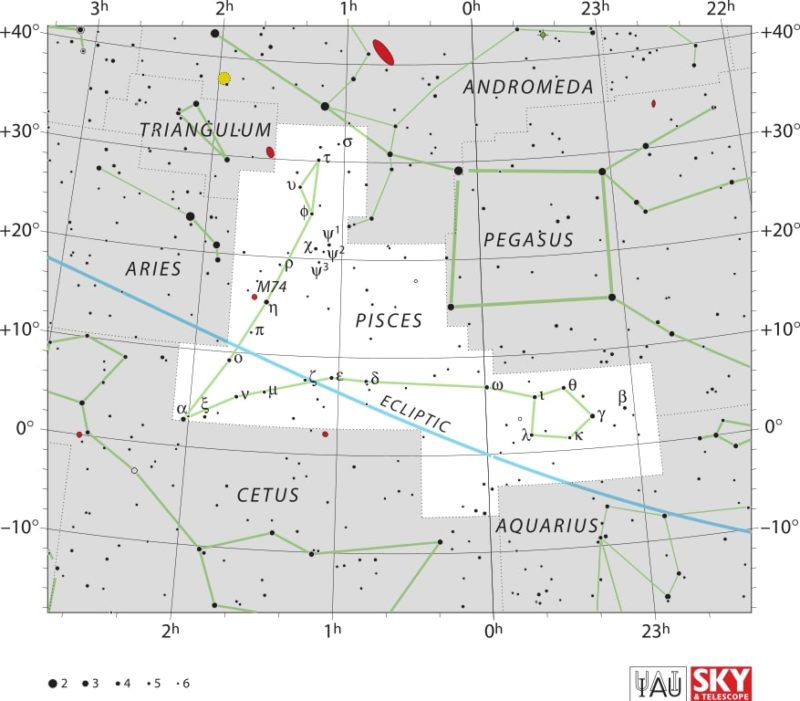
August 8: η-Eridanids meteor shower peak
The Eta Eridanids are a variable meteor shower with peak activity on August 8. Some meteors may also be spotted between July 31 and August 19, enriching your stargazing this summer of 2025. They will radiate from the constellation of Eridanus at the speed of 64 km/s on average.
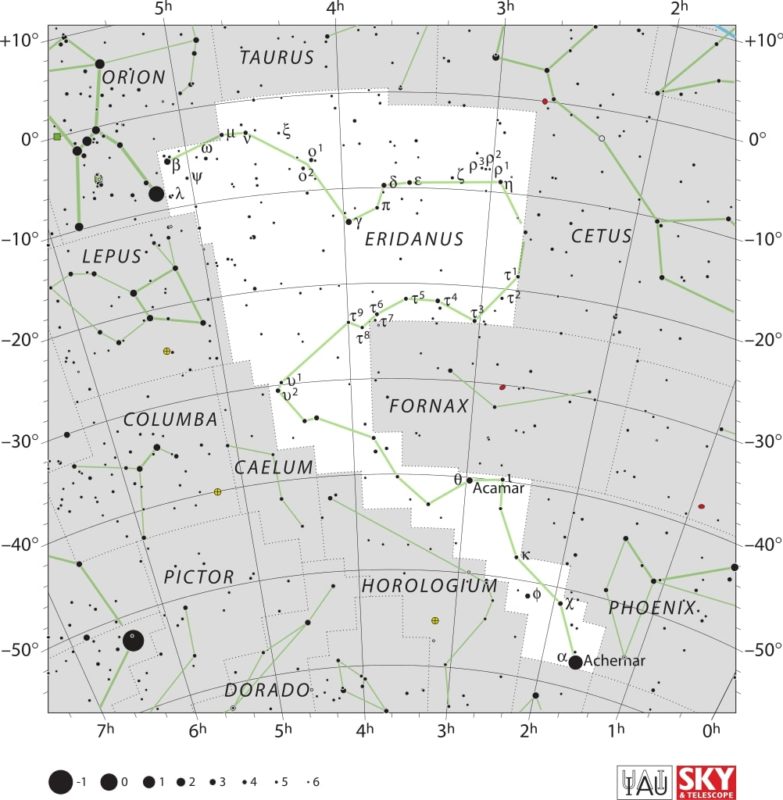
August 10: Asteroid 2 Pallas at opposition
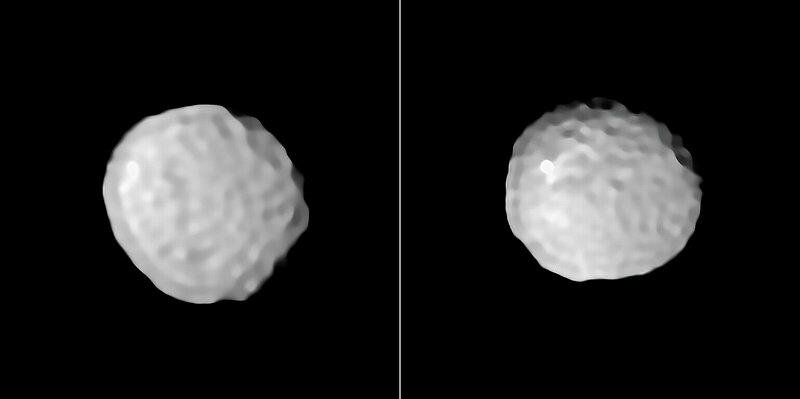
At about midnight local time, the asteroid 2 Pallas will reach the highest point in the sky and be opposite of the Sun. Look in the constellation of Delphinus with binoculars or a telescope, as it will have an apparent magnitude of 9.4. At around the same time Pallas will also reach its closest point to the Earth (perigee) at a distance of 2.502 AU. The Moon will be 17 days old waning gibbous at 98% and will interfere with stargazing this early August 2025.
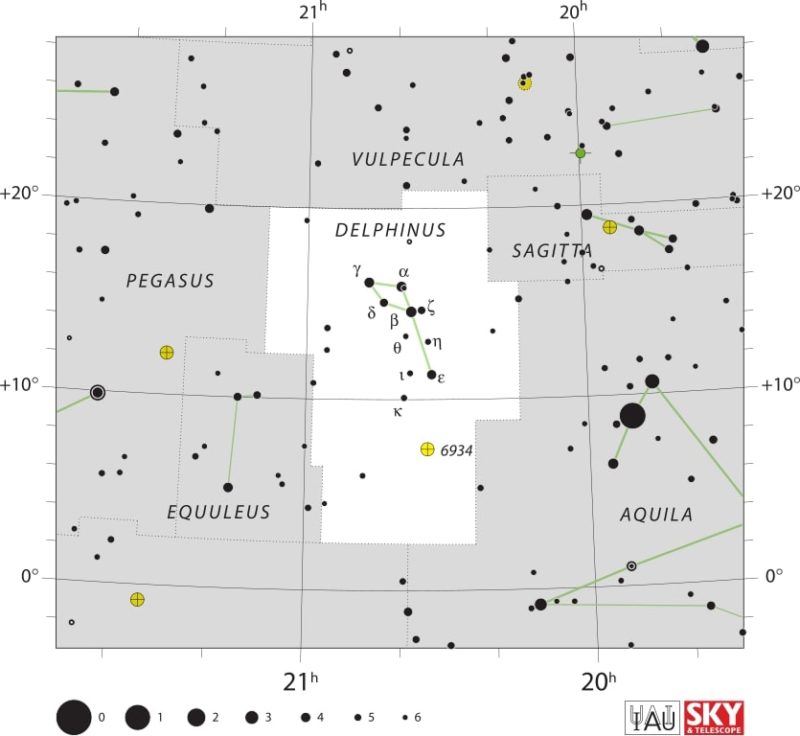
August 10: Asteroid 89 Julia at opposition
The asteroid 89 Julia will reach its highest point in the sky at around midnight local time because it will be exactly opposite to the Sun in the sky.
At about the same time, asteroid Julia will also reach perigee, the closest point to the Earth, at 1.14 AU from Earth. It’s at this time that Julia will be brightest in the sky. Despite this, you will need a telescope to spot this asteroid it will have an apparent magnitude of only 8.5. Look in the constellation of Aquarius. The Moon will be 17 days old waning gibbous at 94%.
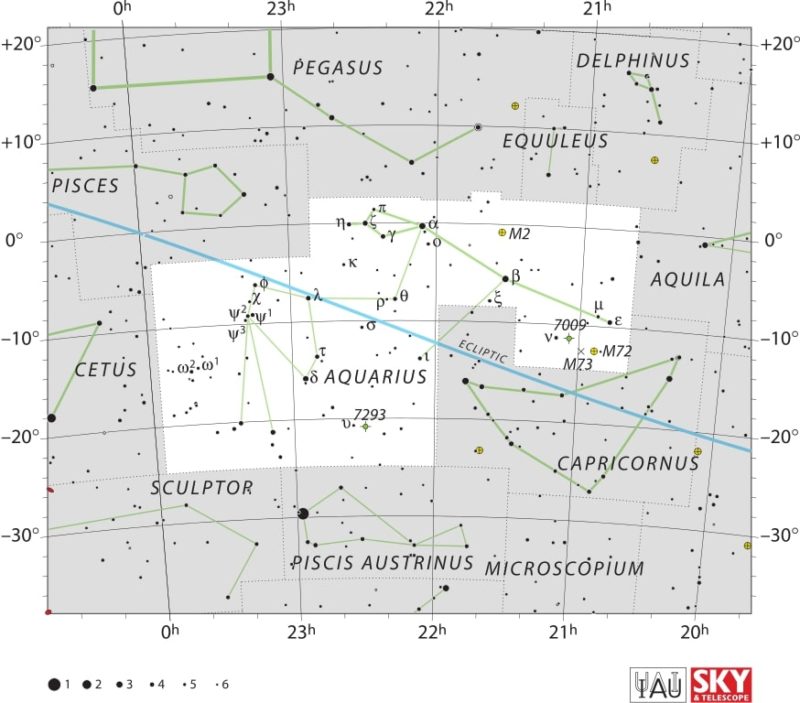
August 12: Conjunction of Venus and Jupiter
Venus and Jupiter will reach conjunction passing within 51′ of each other while sharing the same right ascension.
Around the same time, the two bodies will also make a close approach (appulse) reaching 51.6 from each other, but not sharing the same right ascension.
Venus will be at apparent magnitude -4.0 and Jupiter at magnitude -1.9 both in the constellation of Gemini. The Moon will be 19 days old waning gibbous at 85%.
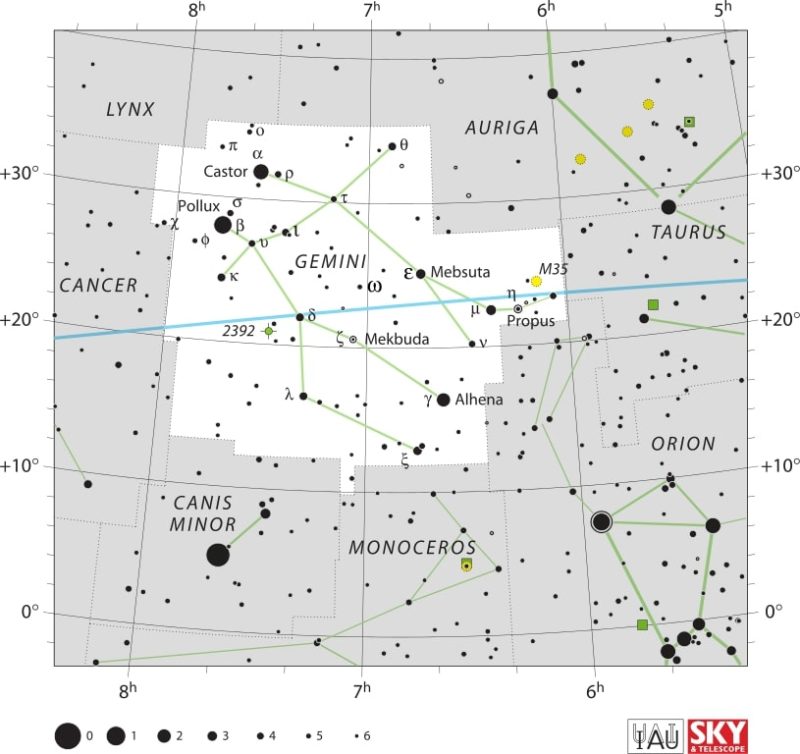
August 12: Close approach of the Moon, Saturn and Neptune
The Moon, Saturn and Neptune will make a close approach (appulse) passing within 3°33′ of each other.
The Moon will be at apparent magnitude -12.6, Saturn at magnitude 0.6, and Neptune at magnitude 7.8, all in the constellation of Pisces. (Constellation map already displayed above, when discussing the conjunction of Saturn and Neptune on August 6.)
August 12: Conjunction of the Moon and Saturn
The Moon and Saturn will reach conjunction passing within 4°02′ of each other while sharing the same right ascension.
The Moon will be at apparent magnitude -12.5 and Saturn at magnitude 0.6 both in the constellation of Pisces. (Constellation map already displayed above, when discussing the conjunction of Saturn and Neptune on August 6.)
August 12: Perseid meteor shower peak
The Perseids are the largest regular meteor shower with an average of 150 meteors per hour (ZHR) during the peak if conditions are ideal. (See featured photo at the top of the article.) The Moon will be 19 days old waning gibbous at 81%.
Some meteors may also be spotted between July 17 and August 24. They will radiate from the constellation of Perseus at the speed of 59 km/s on average, originating from debris left by comet 109P/Swift-Tuttle.
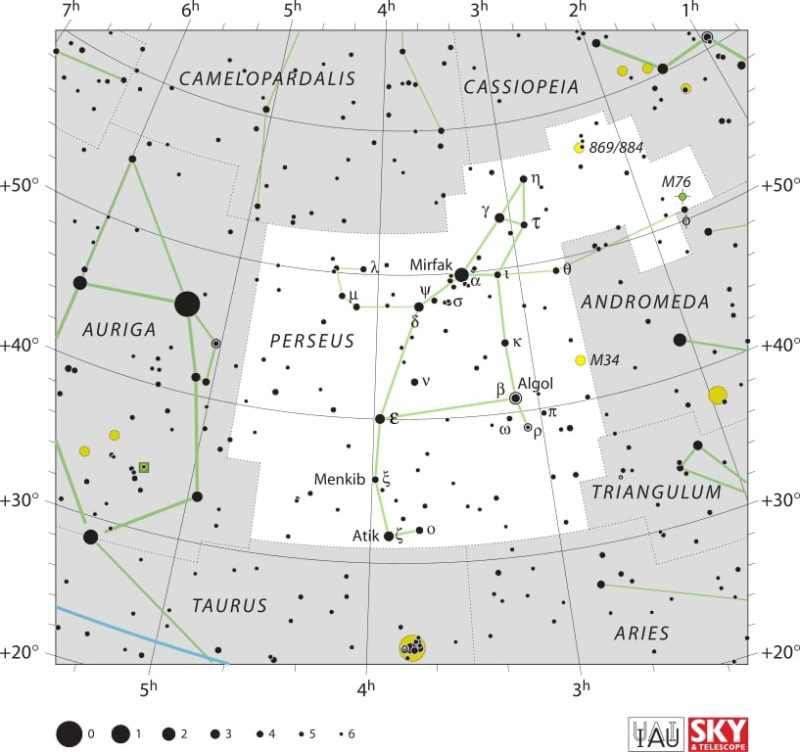
August 14: Messier 15 at its highest point in the sky

Messier 15 (also known as M15, NGC 7078, or the Great Pegasus Cluster) is a globular cluster in the constellation of Pegasus. At apparent magnitude 6.3, Messier 15 is easily visible with binoculars or a small telescope. The Moon will be a 21 days old, waning gibbous at 58%.
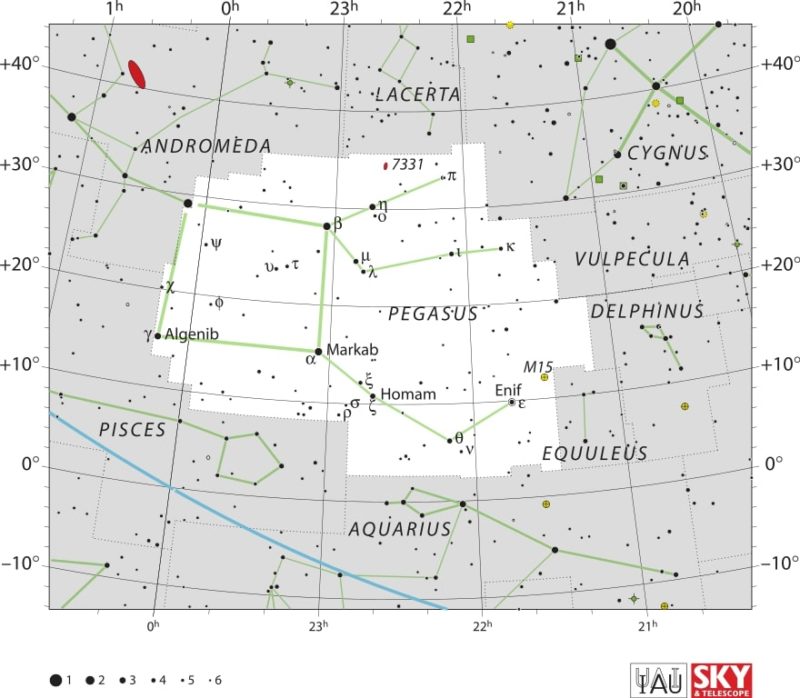
August 15: Messier 2 at its highest point in the sky
Messier 2 (also known as M2 or NGC 7089) in the constellation of Aquarius is one of the largest known globular clusters. (Constellation map already displayed above, when discussing the asteroid 89 Julia at opposition on August 10.) At apparent magnitude 6.6, Messier 2 is easily visible with a small telescope. The Moon will be a 22 days old, waning crescent at 47%.
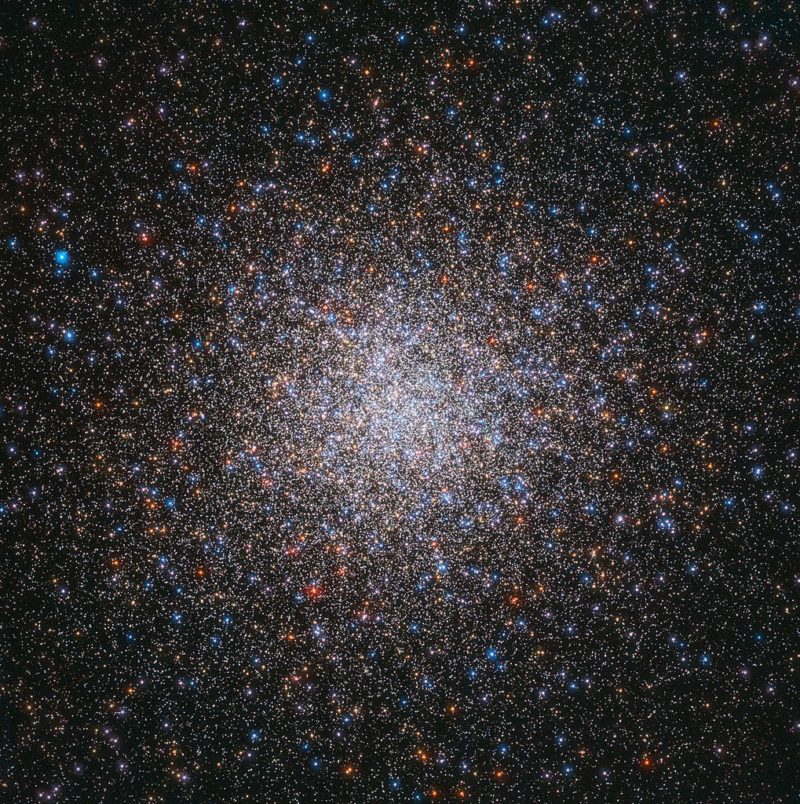
August 16: Close approach of the Moon and the Pleiades
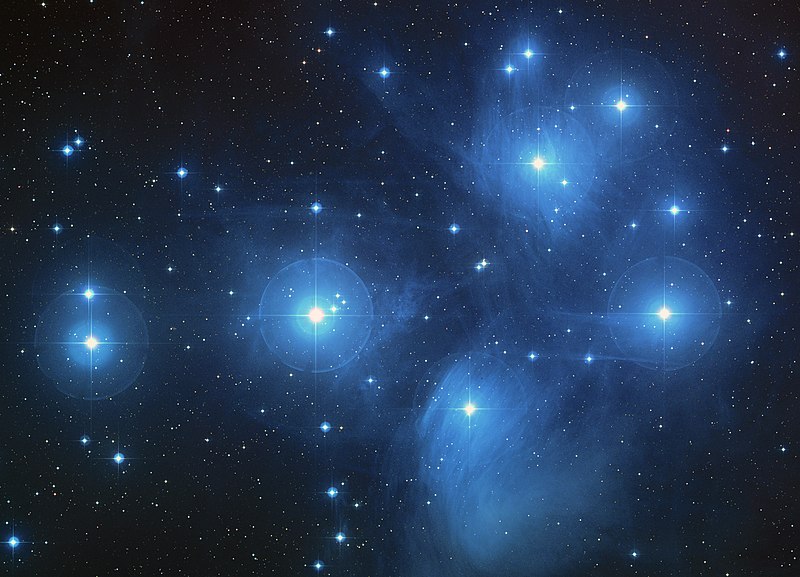
The Moon and the Pleiades star cluster (M45) will make a close approach or appulse, by passing within 55.3 arcminutes of each other. This will happen in the constellation of Taurus.
You can observe this astronomical event with the naked eye because the Moon will be at apparent magnitude -11.8 and M45 at 1.3. The Moon will be 23 days old, meaning it will be a waning crescent at 38% and won’t interfere much with stargazing this late August 2025.
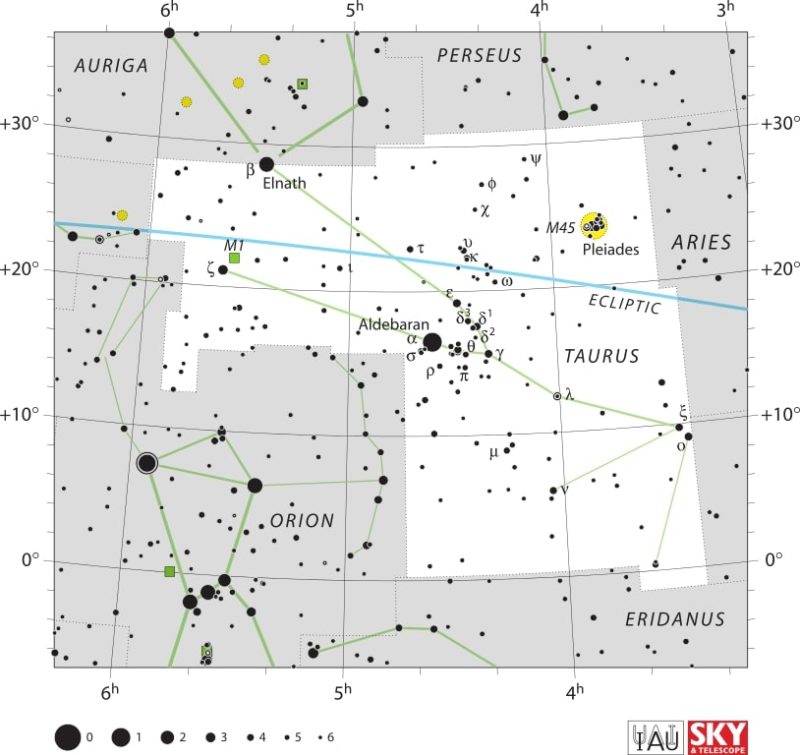
August 17: κ-Cygnids meteor shower peak
The Kappa Cygnids will peak this August 2025 with a zenithal hourly rate of 3 if stargazing conditions are ideal. Fortunately, the Moon will be a 25 days old waning crescent at 25%.
Some meteors may also be spotted between August 3 and August 25. They will radiate from the constellation of Cygnus, near the star Kappa Cygni, at the speed of 25 km/s on average.
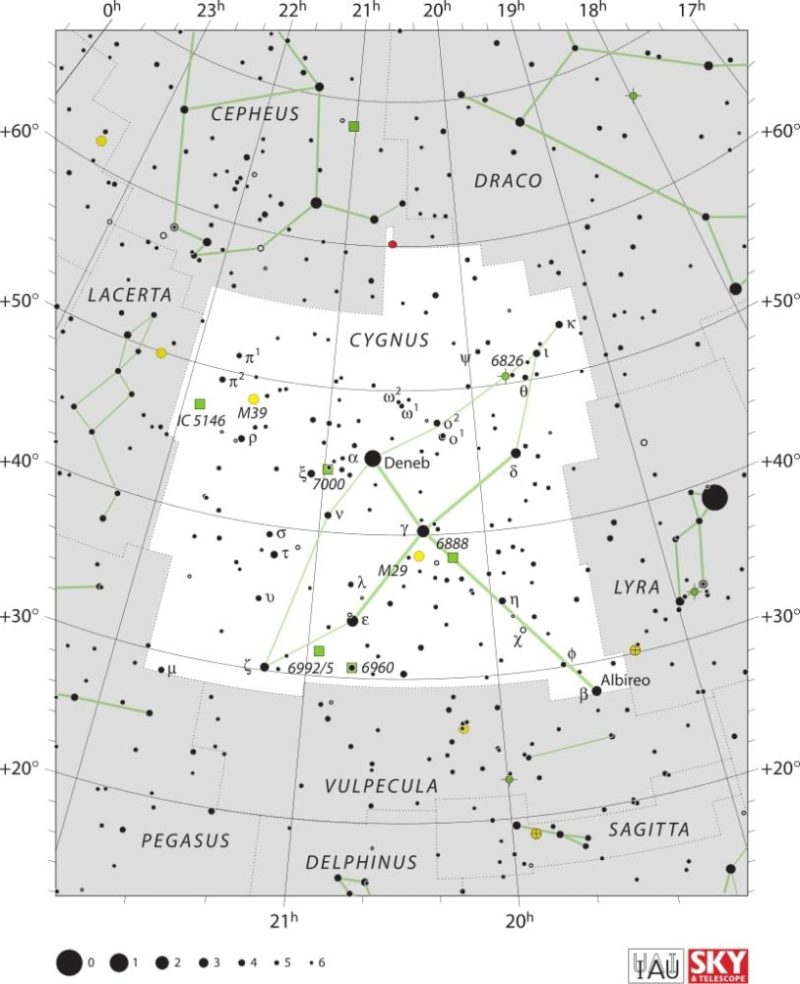
August 19: Mercury at greatest western elongation
Mercury will be at its highest point above the horizon in the morning sky, making it the best time to view the planet. Look for it low in the eastern sky just before sunrise.
It will be at apparent magnitude -0.2 in the constellation of Cancer. The Moon will be 26 days old, waning crescent at 11%.
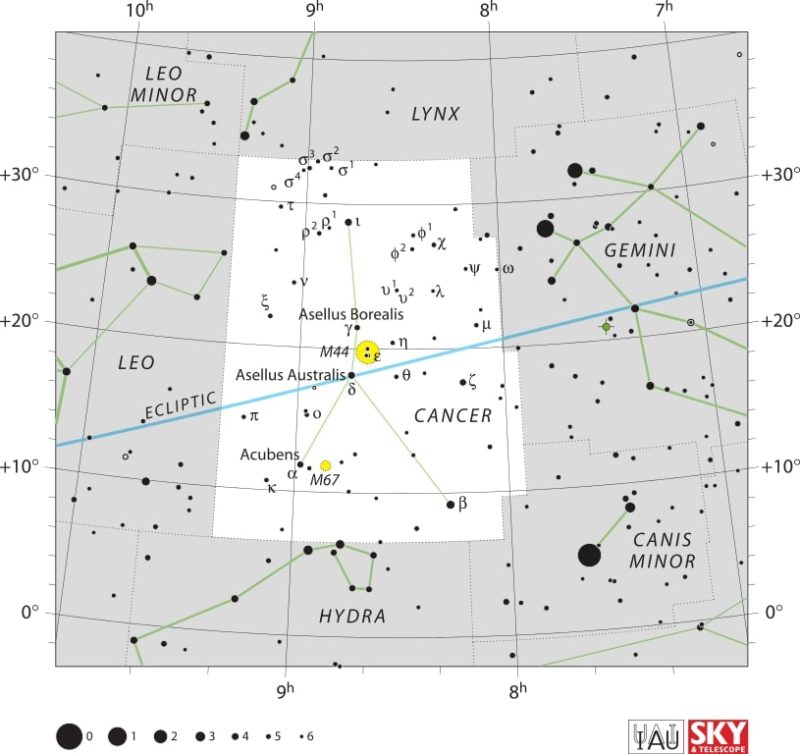
August 19: Conjunction of the Moon and Jupiter
The Moon and Jupiter will be at conjunction by sharing the same right ascension and passing within 4°46′ of each other.
Around the same time, the two bodies will also make a close approach (appulse) reaching 4°42′ from each other, but not sharing the same right ascension.
The two celestial bodies will meet in the constellation of Gemini with the Moon at apparent magnitude of -10.5 and Jupiter at -2.0. (Constellation map already displayed above, when discussing the conjunction of Venus and Jupiter on August 12.) The Moon will be a 3 days old waxing crescent at 16%.
Venus will also be nearby, waiting for it’s own conjunction with the Moon on the next day.
August 20: Conjunction of the Moon and Venus
The Moon and Venus will be at conjunction by sharing the same right ascension and passing within 4°52′ of each other.
Look for the two bodies in the constellation of Gemini. (Constellation map already displayed above, when discussing the conjunction of Venus and Jupiter on August 12.) The Moon will be a 27 days old, very thin waning crescent at 6%. Despite this, the Moon will still be at apparent magnitude of -10.1, while Venus will be at magnitude -4.0.
Jupiter will still be lingering nearby after it’s own conjunction with the Moon on the previous day.
August 21: Conjunction of the Moon and Mercury
The Moon and Mercury will be at conjunction by sharing the same right ascension and passing within 3°42′ of each other.
The two celestial bodies will meet in the constellation of Cancer. (Constellation map already displayed above, when discussing Mercury at greatest western elongation on August 19.) The Moon will be at apparent magnitude -8.8 for and Mercury at -0.5. The Moon will be a 28 days old, very thin waxing crescent at 1%.
August 25: Asteroid 6 Hebe at opposition
The asteroid 6 Hebe will be at opposition on August 25. Look for this asteroid in the highest point in the sky at midnight local time in the in the constellation of Aquarius. (Constellation map already displayed above, when discussing the asteroid 89 Julia at opposition on August 10.) Hebe has a diameter between 186 and 195 km. It was named after Hebe, the Greek goddess of youth.

It will pass within 1.028 AU of Earth, reaching a peak brightness of magnitude 7.6, which will require a telescope. The Moon will be a 2 days old, very thin waxing crescent at 8%.
August 26: Conjunction of the Moon and Mars
The Moon and Mars will be at conjunction by sharing the same right ascension and passing within 2°47′ of each other.
Around the same time, the two bodies will also make a close approach (appulse) reaching 2°27′ from each other, but not sharing the same right ascension.
Look for the two bodies in the constellation of Virgo. The Moon will be at apparent magnitude of -10.2, while Mars will be at magnitude 1.6. The Moon will be waxing crescent (14%) at 3 days old.
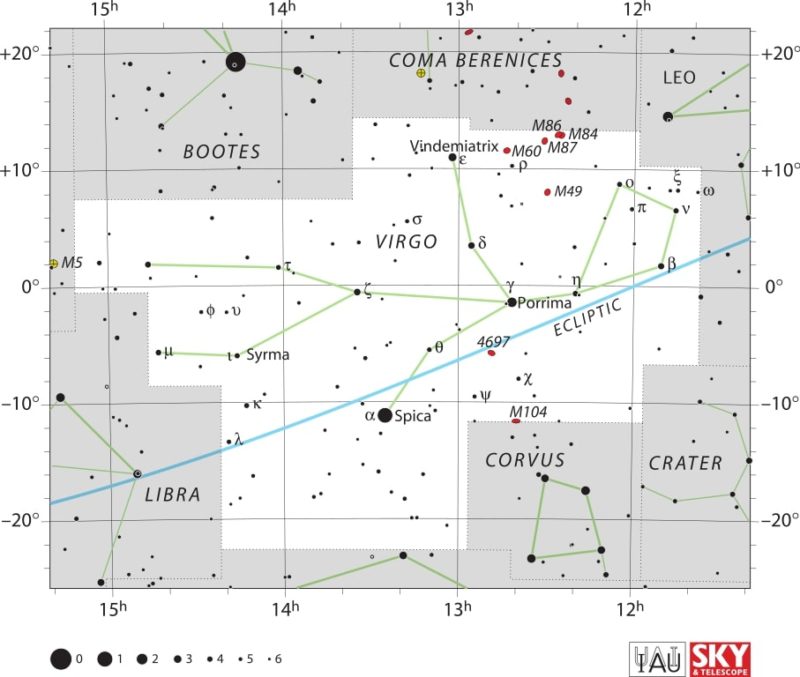
August 31: Aurigids meteor shower peak
The Aurigids will peak this August 2025 with a zenithal hourly rate of 6 if stargazing conditions are ideal. With the Moon 8 days old, waxing gibbous at 56%, the conditions will be close to ideal, baring unfavorable atmospheric conditions.
Some meteors may also be spotted between August 28 and September 5. They will radiate from the constellation of Auriga at the speed of 66 km/s on average. The meteors from this shower originate from comet Kiess (C/1911 N1).

Moon Phases in August 2025
As you know, the Moon has a big impact on the visibility of celestial bodies and astronomical events in the night sky. So to help you with stargazing, here’s a calendar of the phases of Moon for this month of August 2025:

Positions of the Planets in August 2025
- Mercury: The closest planet to the Sun can be seen at dawn and dusk travelling across the constellation of Cancer. This planet, being the closest to the Sun, will appear to move quickly in the night sky and its position will change in the following weeks.
- Venus: The sister planet can be seen travelling across the constellation of Gemini. Just like Mercury, Venus can only be seen at dawn and dusk.
- Mars: The red planet can be seen in the constellation of Virgo.
- Jupiter: The gas giant is visible in the constellation of Gemini. Jupiter can easily be spotted with the naked eye, even in highly illuminated cities.
- Saturn: The ringed giant can be seen with the naked eye in the constellation of Pisces.
- Uranus: The ice giant can be seen in the constellation of Taurus with the use of a telescope.
- Neptune: The blue giant requires a telescope pointed in the constellation of Pisces in order to be seen.
Positions of Dwarf Planets and Large Asteroids in August 2025
- Ceres: The asteroid belt’s lone dwarf planet can be seen in the constellation of Cetus with the help of a telescope.
- Vesta: This large asteroid can be seen in the constellation of Libra with a telescope.
- Pallas: The asteroid can be observed with a telescope in the constellation of Delphinus.
- Hygiea: The fourth largest asteroid can be found with a telescope in the constellation of Taurus.
- Pluto: This distant dwarf planet can be found in the constellation of Capricornus with the help of a large telescope.
Major astronomical events next month – September 2025
- September 6: ν-Eridanids meteor shower peak
- September 7: Total lunar eclipse
- September 9: September ε-Perseids meteor shower peak
- September 12: ε-Eridanids meteor shower peak
- September 14: χ-Cygnids meteor shower peak
- September 21: Saturn at opposition
- September 21: Partial solar eclipse
- September 22: September equinox
- September 23: Neptune at opposition
- September 27: Daytime Sextantids meteor shower peak
Conclusion
With asteroid oppositions, planetary conjunctions, and multiple meteor showers, stargazing in August 2025 offers a rich lineup of astronomy events. Whether you’re a seasoned observer or just looking up for the first time, this month provides plenty of reasons to explore the night sky.
To ensure you don’t miss out on any celestial happenings, sign up for our newsletter to receive stargazing calendars and more updates. Keep your telescopes ready and clear your calendar for these cosmic highlights!
Sources:
- Planetary ephemerides produced by NASA’s Jet Propulsion Laboratory (JPL)
- International Meteor Organization
See also:
- Previous month’s calendar: Stargazing Calendar for July 2025
- Next month’s calendar: Stargazing Calendar for September 2025
Would you like to receive similar articles by email?




